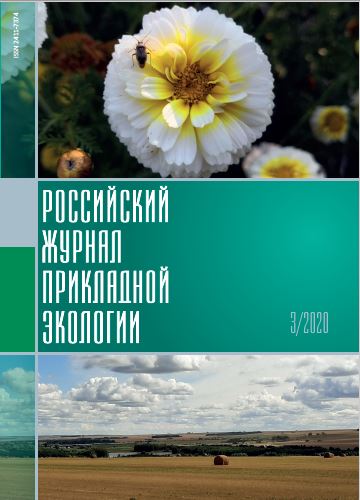Comparative analysis of filtration methods in determining the concentrations of dissolved forms of metals in natural and waste waters
Keywords:
metals, dissolved forms, membrane filtration, water qualityAbstract
The results of the state monitoring of the quality of surface waters in the Russian Federation indicate the presence of systematic excess of the standard concentrations of copper, zinc, manganese and iron compounds dissolved in water in most of the water bodies, including those located in the background areas. This may be due not only to actual pollution, but also to the natural geochemical background of chemical elements, which is not «incorporated» in federal hygienic standards, as well as to the peculiarities of sample preparation methods that allow filtration of water samples to separate dissolved forms of metals using paper filters «white ribbon». Analysis of the ecological state of water bodies in terms of the content of metals, in fact, based on the results of determining not only their truly dissolved, but also their suspended forms, leads to underestimated estimates of the quality of surface waters. The article presents the results of an experiment to determine the dissolved forms of metals in natural and waste waters of Kazan using a membrane filter with a pore diameter of 0.45 microns and a «white ribbon» filter.
References
Gosudarstvennyj doklad o sostoyanii prirodnyh resursov i ob ohrane okruzhayushchej sredy Respubliki Tatarstan v 2019 godu [State report on the state of natural resources and on environmental protection of the Republic of Tatarstan in 2019]. Kazan', 2020. 406 p.
Moiseenko T.I., Kudryavceva L.P., Gashkina N.A. Rasseyannye elementy v poverhnostnyh vodah sushi: tekhnofil'nost', bioakkumulyaciya i ekotoksikologiya [Trace elements in surface terrestrial waters: technophilicity, bioaccumulation and ecotoxicology]. M.: Nauka, 2006. 261 p.
Prikaz Ministerstva sel'skogo hozyajstva Rossijskoj Federacii ot 13.12.2016 g. No 552 «Ob utverzhdenii normativov kachestva vody vodnyh ob"ektov rybohozyajstvennogo znacheniya, v tom chisle normativov predel'no dopustimyh koncentracij vrednyh veshchestv v vodah vodnyh ob"ektov rybohozyajstvennogo znacheniya» [Order of the Ministry of Agriculture of the Russian Federation of 13.12.2016 No 552 «On approval of water quality standards for water bodies of fishery significance, including standards for maximum permissible concentrations of harmful substances in waters of water bodies of fishery significance»].
RD 52.24.643-2002. Metodicheskie ukazaniya. Metod kompleksnoj ocenki stepeni zagryaznennosti poverhnostnyh vod po gidrohimicheskim pokazatelyam [Methodical instructions. Method for a comprehensive assessment of the degree of pollution of surface waters by hydrochemical indicators].
Shagidullin R.R., Ivanov D.V., Gorshkova A.T., Urbanova O.N., Mustafina L.K., Shurmina N.V., Abdullina F.M., Bogdanova O.A., Tokinova R.P., Abramova K.I., Valiev V.S., Ziganshin I.I., Shamaev D.E., Hasanov R.R. Kachestvo vody v reke Kazanka: teoremy i aksiomy [Water quality in the Kazanka river: theorems and axioms] // Materialy kongressa «Chistaya voda. Kazan'» [Materials of the congress «Pure water. Kazan»]. Kazan': OOO «Novoe znanie», 2017. P. 258‒262.





